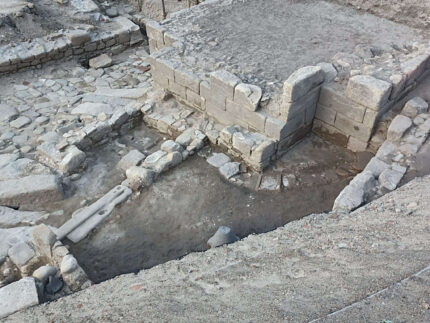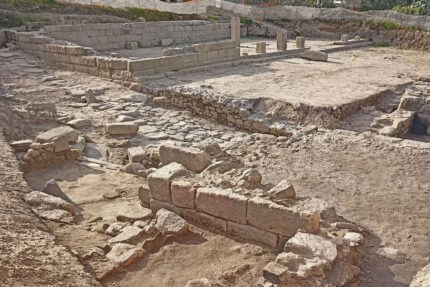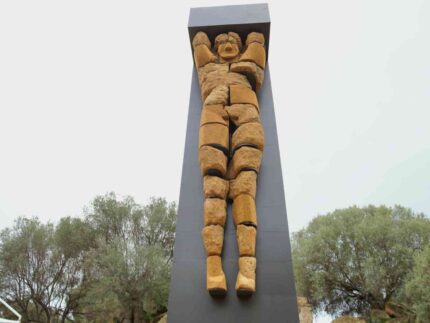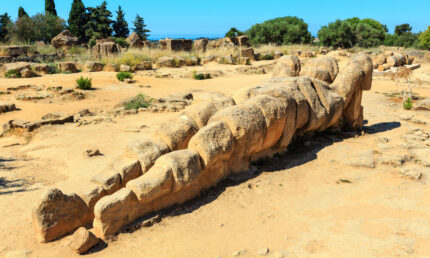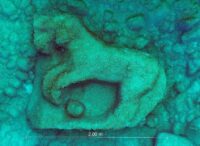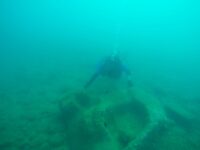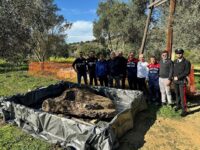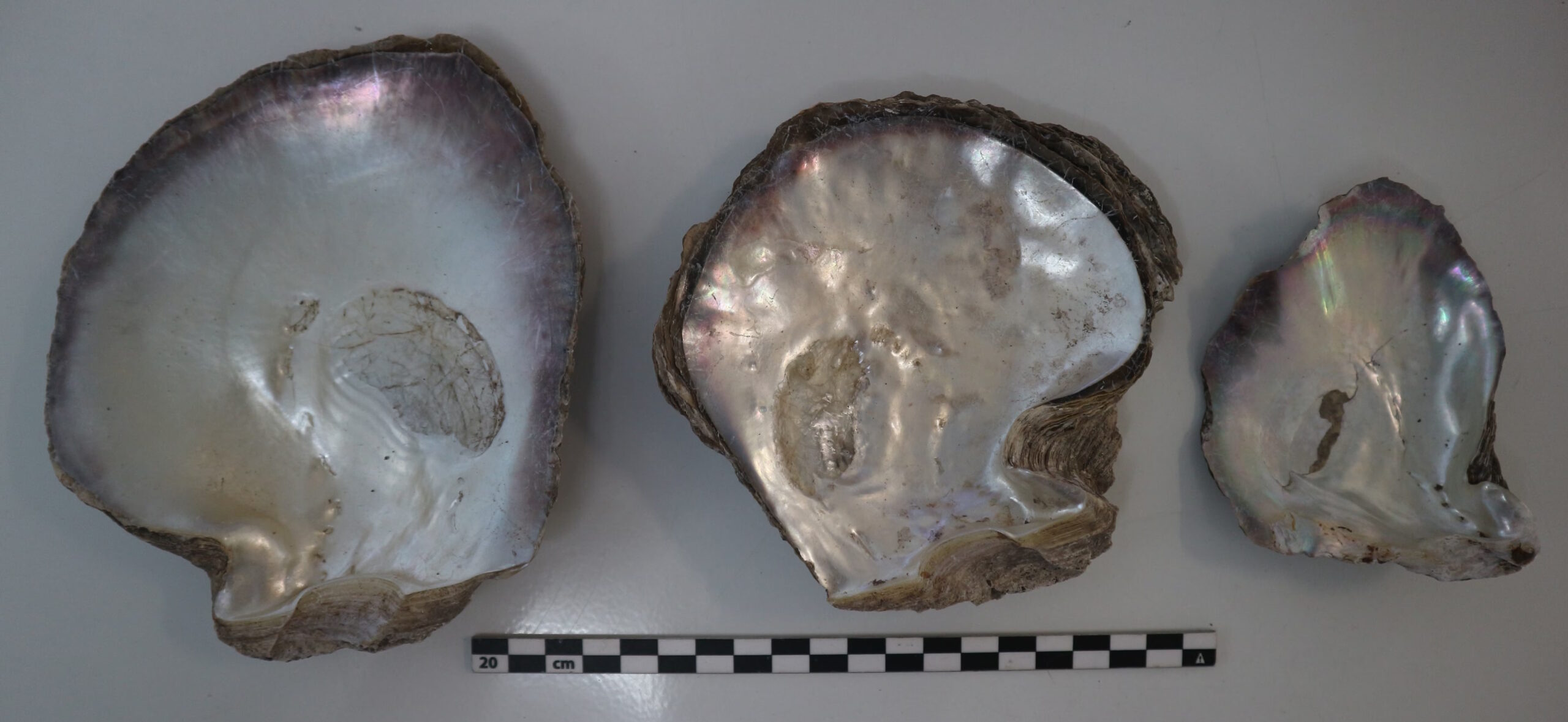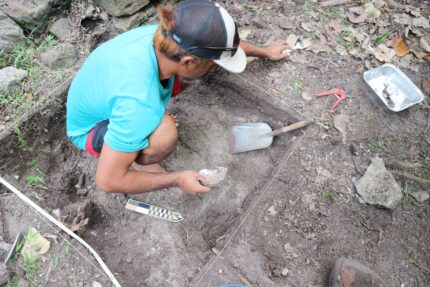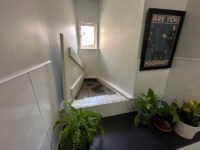 As if the fact that Tracy and Rory Vorster found a hidden trap door on a ledge above their toilet in their home in Lincoln weren’t cool enough, when they opened it, they found a slab of stone carved with a grotesque face bearing a striking resemblance to local icon, the Lincoln Imp. A hole in the open mouth suggested it had been a drain of some sort, or perhaps a urinal. When it was examined by an expert at the Lincoln Civic Trust, the initial impression was confirmed: it was a drain from the middle or late 14th century.
As if the fact that Tracy and Rory Vorster found a hidden trap door on a ledge above their toilet in their home in Lincoln weren’t cool enough, when they opened it, they found a slab of stone carved with a grotesque face bearing a striking resemblance to local icon, the Lincoln Imp. A hole in the open mouth suggested it had been a drain of some sort, or perhaps a urinal. When it was examined by an expert at the Lincoln Civic Trust, the initial impression was confirmed: it was a drain from the middle or late 14th century.
[The couple] said the discovery is an example of why Lincoln is “amazing”, adding they are “proud” of their house’s history.
Mrs Vorster said: “You look at the outside of the house and that is historical enough but to now find something inside is amazing.”
Mr Vorster added: “The whole of the house has kind of a hollow walling, so we immediately thought there could be more. In fact, we’re almost certain now.
“The previous occupant had been here for over 20 years, so surely they knew. But we had absolutely no clue it was there.”
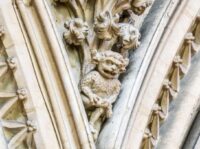 The Lincoln Imp is a carved stone grotesque with cow ears, cow horns, taloned hands, a hirsute body with crossed legs perched atop a pillar overlooking the Angel Choir of Lincoln Cathedral. Probably carved in the 13th century, the imp soon became the popular favorite of the cathedral’s grotesques. Legends rose around the charismatic little devil. In one account, he and an imp friend were sent by Satan to wreak havoc in northern England. They were breaking furniture, smashing stained glass and bullying the Bishop in Lincoln Cathedral when an angel rose from a hymn book and turned the most defiant, rowdiest imp to stone.
The Lincoln Imp is a carved stone grotesque with cow ears, cow horns, taloned hands, a hirsute body with crossed legs perched atop a pillar overlooking the Angel Choir of Lincoln Cathedral. Probably carved in the 13th century, the imp soon became the popular favorite of the cathedral’s grotesques. Legends rose around the charismatic little devil. In one account, he and an imp friend were sent by Satan to wreak havoc in northern England. They were breaking furniture, smashing stained glass and bullying the Bishop in Lincoln Cathedral when an angel rose from a hymn book and turned the most defiant, rowdiest imp to stone.
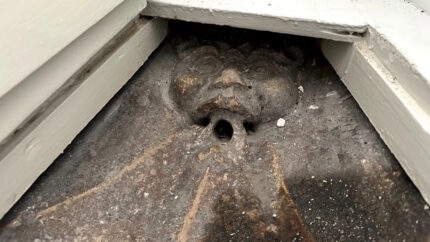 Today the Lincoln Imp is the mascot of the city. The city soccer team is nicknamed “The Imps” and feature the Imp on their logo. Copies of the Imp are found all over the city, and it even reached Oxford University where a reproduction of the Imp was mounted to the wall of the Front Quad of Lincoln College.
Today the Lincoln Imp is the mascot of the city. The city soccer team is nicknamed “The Imps” and feature the Imp on their logo. Copies of the Imp are found all over the city, and it even reached Oxford University where a reproduction of the Imp was mounted to the wall of the Front Quad of Lincoln College.
The Vorsters’ house is on Vicar’s Court, a building founded by the college of priests in the 13th century in the Minster Yard just south of the cathedral. Part of it was demolished in the English Civil War, but among the remains today are a select group of rental homes owned by Lincoln Cathedral. A survey of the historic homes in Lincoln published in 1987 records “grotesque mask which forms the drain” in a Vicar’s Court house.
